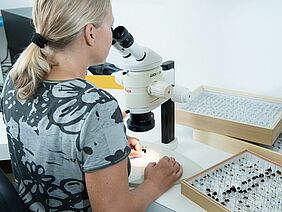"For a long time, we thought honeybees were sufficient for pollination in agriculture," says Aliette Bosem, biodiversity expert at FiBL. "However, recent research has shown that, in the background, wild bees provide indispensable services for agriculture. That's because they are far more efficient pollinators than honeybees." Wild bees fly at temperatures as low as seven degrees Celsius, while honey bees need ten to twelve degrees. "Our more than 600 wild bee species are also irreplaceable for biodiversity," adds FiBL agroecologist Lukas Pfiffner. "Some wildflowers can only be pollinated by specialised wild bee species due to their flower anatomy." Unfortunately, many wild bee species in Central Europe are at risk due to pesticide use, among other factors, and there is also a lack of flowers and nesting sites. The decline in wild bee populations has already led to yield losses in some places. Special support and protection measures are needed to halt this decline. "This is where our projects come in," says Aliette Bosem. "The results demonstrate that agriculture can promote its important helpers, the wild bees."
Ideal scenario: Minus pesticides, plus biodiversity
A FiBL study carried out in 2020 on agricultural holdings shows that cereal plots under conventional but pesticide-free management or under organic management host up to 35 per cent more wild bees than those under purely conventional management. The flora accompanying the crop, also termed arable weeds, is key in this regard: If no herbicides are applied, weeds flower more, wild bees find more food and their populations increase. "However, the positive effect of pesticide-free cultivation methods only comes to pass if there are near-natural habitats in the immediate vicinity, such as species-rich grassland, forest edges or perennial flowering strips," Lukas Pfiffner notes. "In addition to food, bees also need suitable nesting sites for overwintering."
Further information
Contact
Link
fibl.org: Activity report




